
How to Use ProtoSnap - Pro Mini - Pro Mini Board: Examples, Pinouts, and Specs
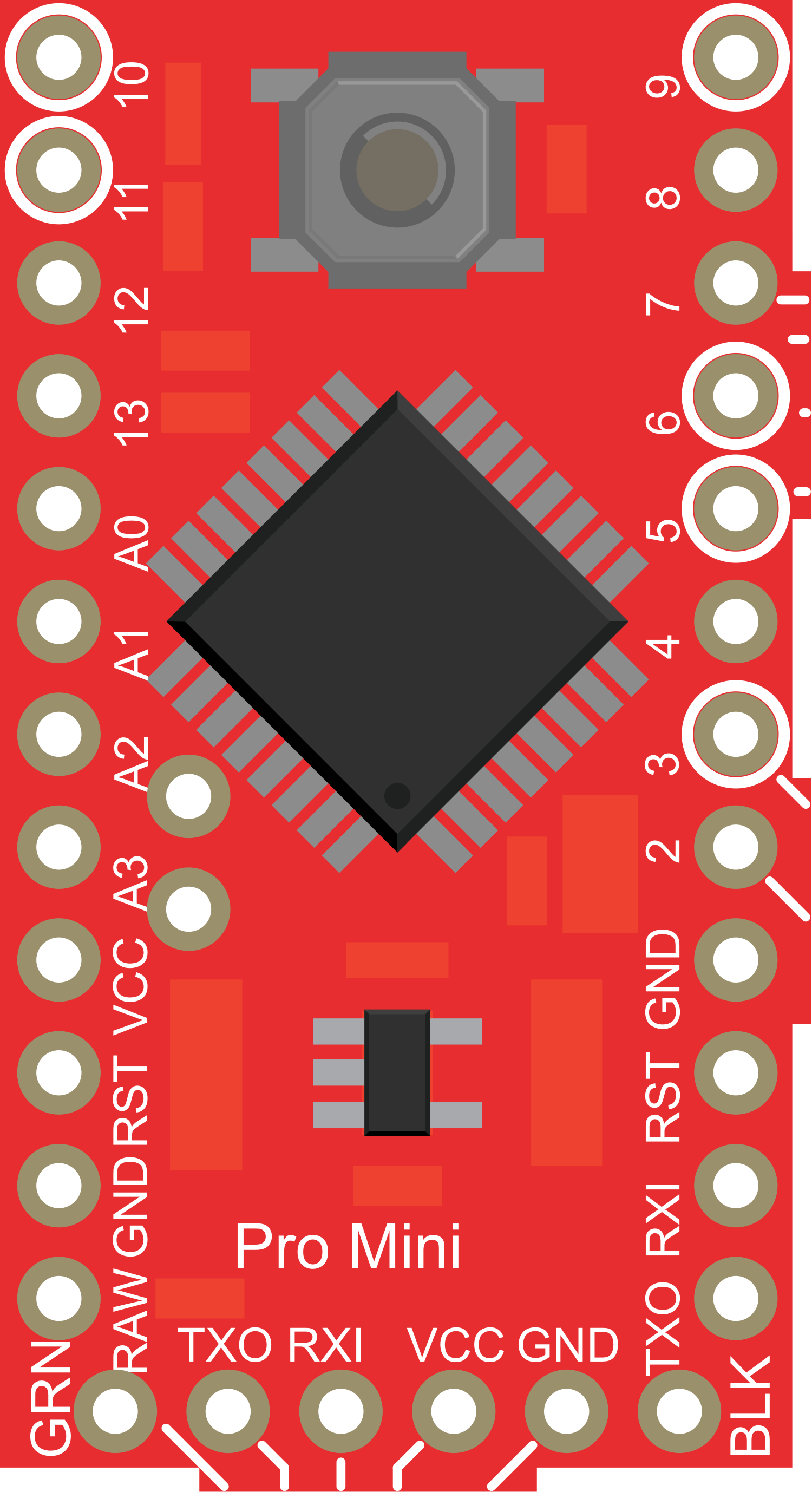
 Design with ProtoSnap - Pro Mini - Pro Mini Board in Cirkit Designer
Design with ProtoSnap - Pro Mini - Pro Mini Board in Cirkit DesignerIntroduction
The ProtoSnap - Pro Mini - Pro Mini Board is a versatile and compact prototyping platform that incorporates an Arduino Pro Mini. This board is ideal for hobbyists, educators, and professionals who need a quick and efficient way to develop and test their Arduino-based projects. Its small form factor makes it suitable for portable applications, wearable technology, and embedded systems.
Explore Projects Built with ProtoSnap - Pro Mini - Pro Mini Board
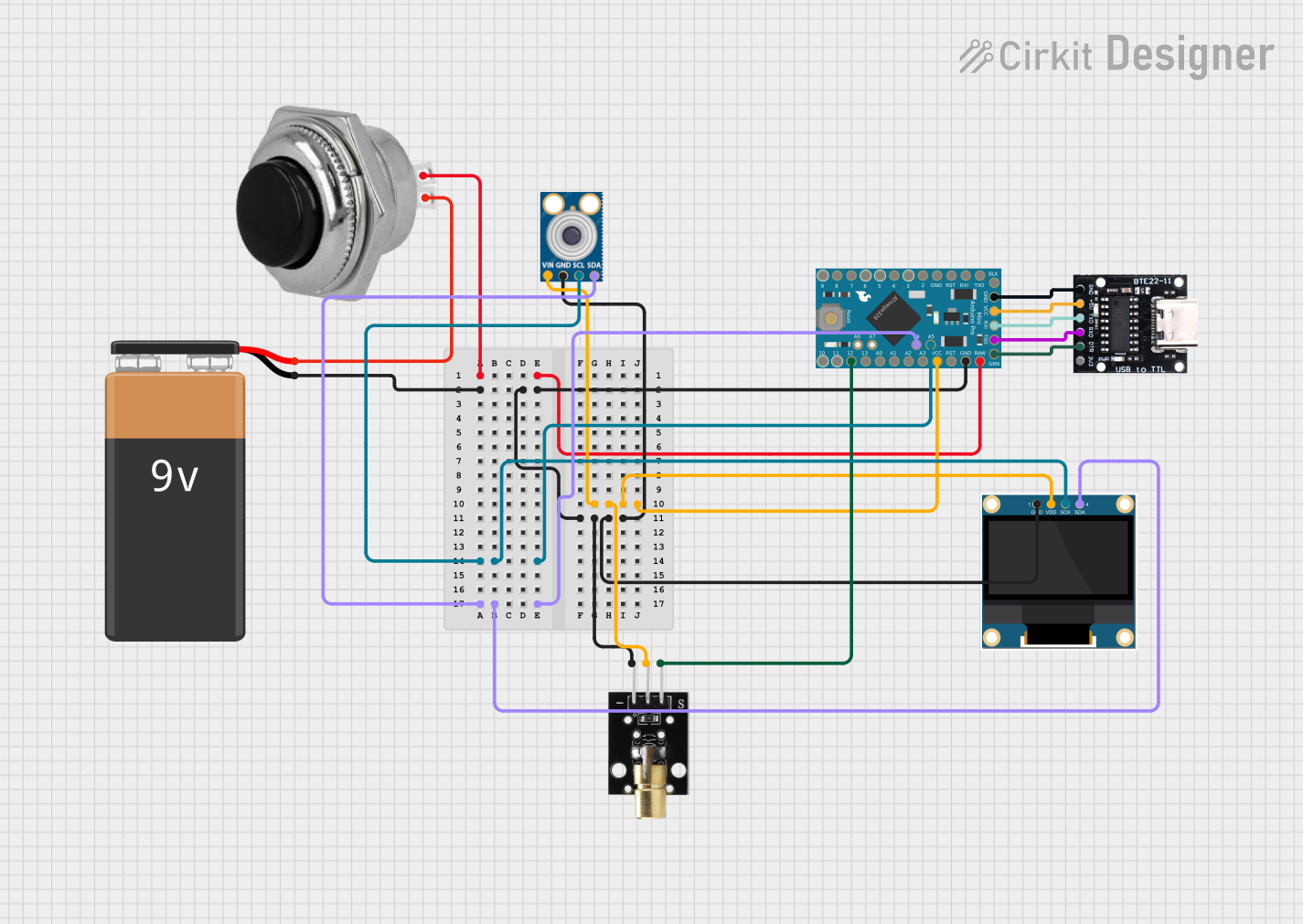
 Open Project in Cirkit Designer
Open Project in Cirkit Designer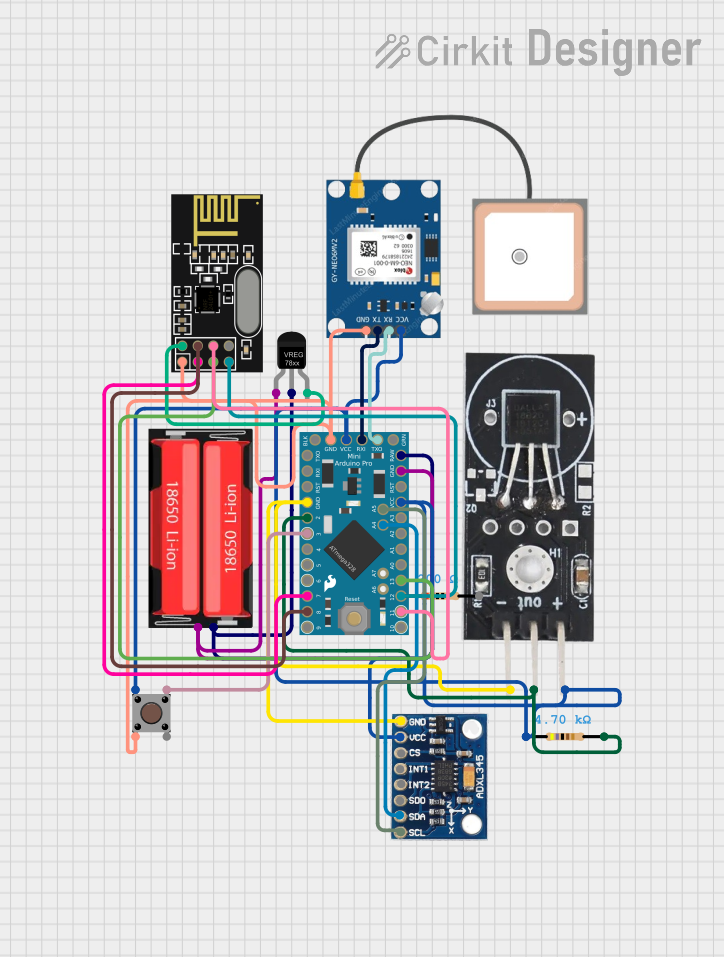
 Open Project in Cirkit Designer
Open Project in Cirkit Designer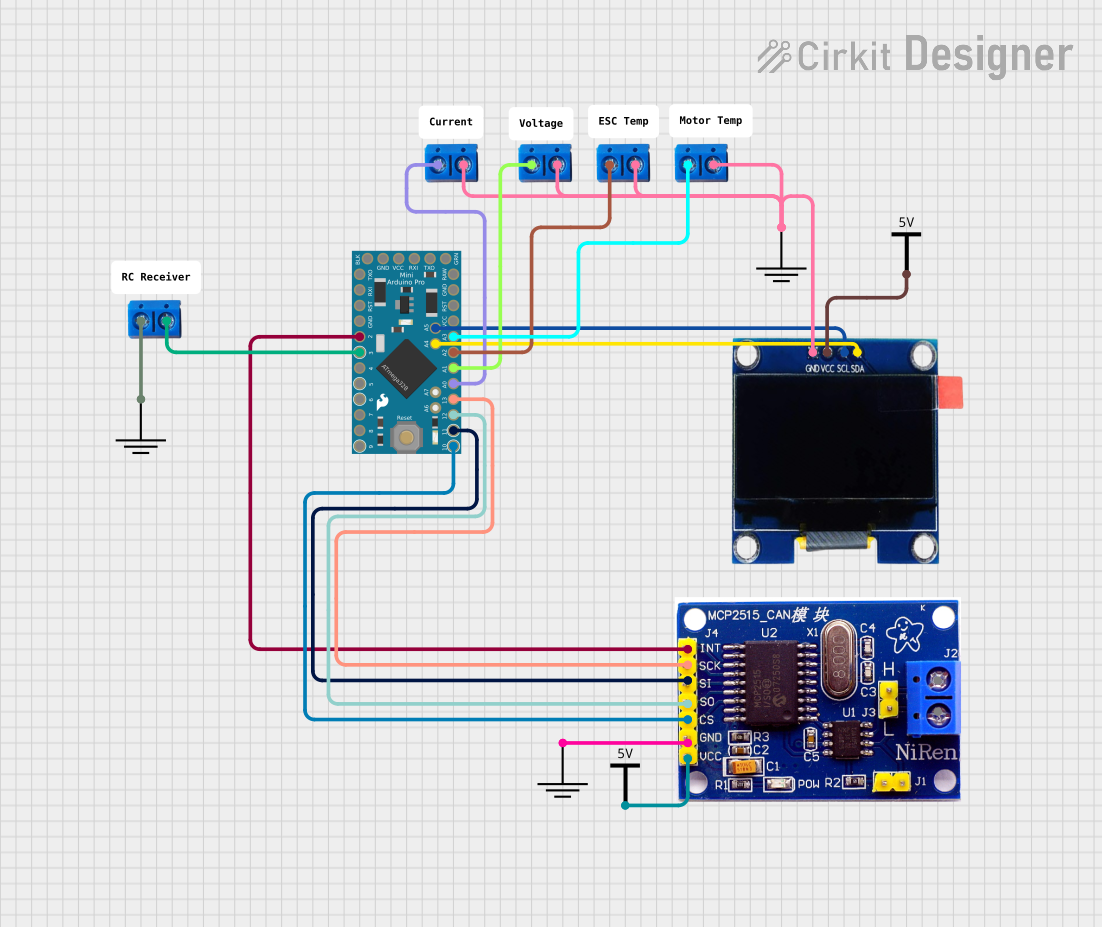
 Open Project in Cirkit Designer
Open Project in Cirkit Designer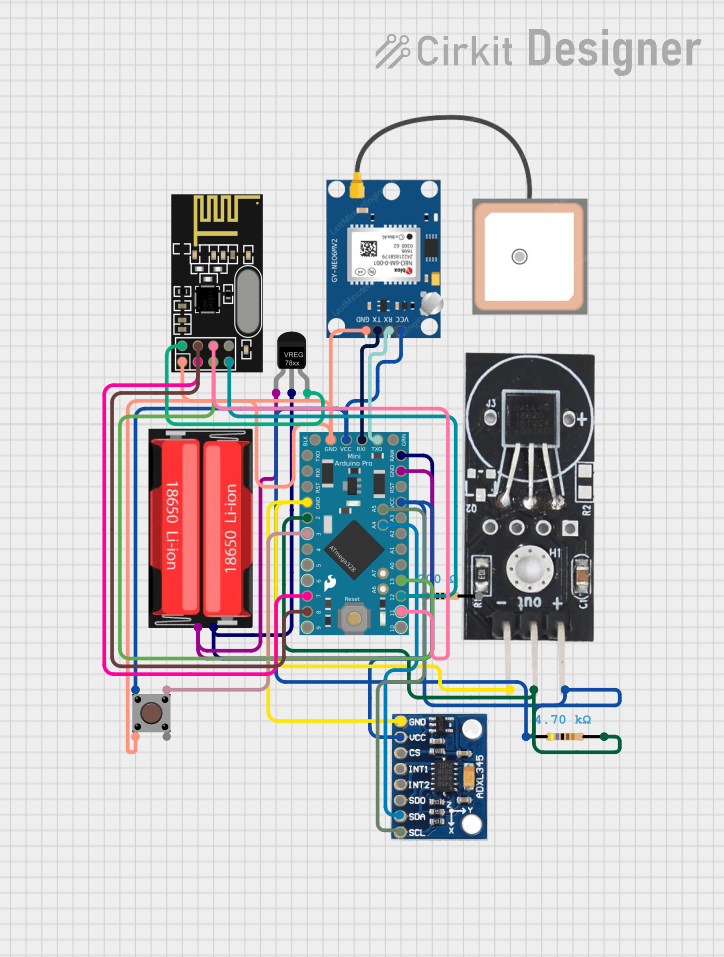
 Open Project in Cirkit Designer
Open Project in Cirkit DesignerExplore Projects Built with ProtoSnap - Pro Mini - Pro Mini Board

 Open Project in Cirkit Designer
Open Project in Cirkit Designer
 Open Project in Cirkit Designer
Open Project in Cirkit Designer
 Open Project in Cirkit Designer
Open Project in Cirkit Designer
 Open Project in Cirkit Designer
Open Project in Cirkit DesignerCommon Applications and Use Cases
- Rapid prototyping of microcontroller-based projects
- Educational purposes for learning electronics and programming
- DIY electronics projects
- Wearable and embedded applications
- IoT devices and smart sensors
Technical Specifications
Key Technical Details
- Microcontroller: ATmega328
- Operating Voltage: 3.3V or 5V (depending on the model)
- Input Voltage (recommended): 7-12V
- Digital I/O Pins: 14 (of which 6 provide PWM output)
- Analog Input Pins: 6
- DC Current per I/O Pin: 40 mA
- Flash Memory: 32 KB (ATmega328) of which 0.5 KB used by bootloader
- SRAM: 2 KB (ATmega328)
- EEPROM: 1 KB (ATmega328)
- Clock Speed: 8 MHz (3.3V model) or 16 MHz (5V model)
Pin Configuration and Descriptions
| Pin Number | Function | Description |
|---|---|---|
| 1 | RESET | Used to reset the microcontroller |
| 2-13 | Digital Pins | Digital input/output pins, PWM on 3,5,6,9,10,11 |
| 14-19 | Analog Pins | Analog input pins (A0-A5) |
| 20 | AREF | Analog reference voltage for the ADC |
| 21 | GND | Ground pin |
| 22 | RST | Reset pin, active low |
| 23 | VCC | Positive supply voltage for the microcontroller |
| 24 | GND | Ground pin |
| 25 | RAW | Raw input voltage for onboard regulator |
Usage Instructions
How to Use the Component in a Circuit
- Powering the Board: Connect a 7-12V power supply to the RAW and GND pins for the onboard voltage regulator, or supply regulated 3.3V or 5V directly to the VCC pin.
- Programming the Board: Use an FTDI breakout or similar USB-to-serial converter to upload sketches via the board's six-pin serial programming header.
- Connecting Peripherals: Attach sensors, actuators, and other peripherals to the digital and analog pins as required by your project.
Important Considerations and Best Practices
- Always ensure that the power supply voltage matches the board's requirements to avoid damaging the microcontroller.
- When connecting peripherals that draw significant current, consider using external power sources to prevent overloading the board's voltage regulator.
- Use pull-up or pull-down resistors with digital inputs to ensure a stable state when no input signal is present.
- Avoid exposing the board to static electricity or physical stress that could damage the components.
Example Code for Arduino UNO
// Blink an LED connected to pin 13 of the ProtoSnap - Pro Mini
void setup() {
pinMode(13, OUTPUT); // Set pin 13 as an output
}
void loop() {
digitalWrite(13, HIGH); // Turn the LED on
delay(1000); // Wait for a second
digitalWrite(13, LOW); // Turn the LED off
delay(1000); // Wait for a second
}
Troubleshooting and FAQs
Common Issues Users Might Face
- Board not responding: Ensure that the correct drivers are installed for the USB-to-serial converter and that the correct board and port are selected in the Arduino IDE.
- Sketch not uploading: Check the connections to the serial programming header and ensure the bootloader is intact. Pressing the reset button just before uploading may help.
- Unexpected behavior: Verify that all connections are secure and that the power supply is stable and within the specified range.
Solutions and Tips for Troubleshooting
- If the board is unresponsive, try using a different USB cable or port, and ensure that the FTDI drivers are up to date.
- For power issues, measure the voltage at the VCC and GND pins to ensure it is within the specified range.
- If you encounter errors during upload, double-check the bootloader status and the board settings in the Arduino IDE.
FAQs
Q: Can I power the ProtoSnap - Pro Mini with a battery? A: Yes, you can power it with a battery connected to the RAW and GND pins, provided the battery voltage is within the 7-12V range.
Q: How do I connect sensors to the board? A: Sensors can be connected to the digital or analog pins, depending on their output type. Make sure to configure the pins correctly in your sketch.
Q: What should I do if I accidentally connect the power supply to the wrong pins? A: Disconnect the power immediately and check the board for any signs of damage. If the board does not function correctly afterward, it may be damaged beyond repair.
For further assistance, consult the community forums or the manufacturer's support resources.